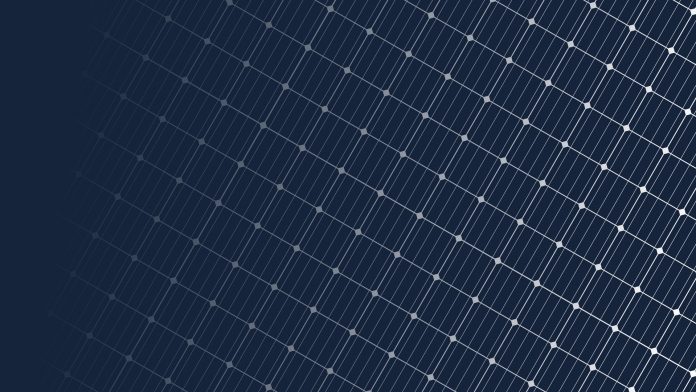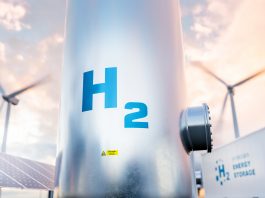Gerard Scheper, CEO of European Solar, discusses the energy transition and its effects on the solar energy sector and its suppliers obtaining PV materials.
The European Commission intends to scale up the yield capacity to 600 gigawatts in 2030. The engine of the clean energy transition is running at full speed, but under the hood, it is starting to smoke. Scarcity of raw materials and continually rising transport costs are causing problems for independent entrepreneurs, in particular, says Gerard Scheper, CEO of European Solar.
The solar energy sector is growing rapidly, with countries worldwide intending to utilise it as a key renewable source to forward ambitious climate plans. However, there are parties on the verge of collapse.
“I cannot help feeling that many parties hardly have any more room for manoeuvre. The fat on the bones of the smaller independent entrepreneurs is gone after two years of COVID-19. High transport costs and shortages of raw materials result in enormously high costs that do not compensate for the increased demand,” explained Scheper.
Obtaining PV materials for solar energy: Reliance on China for raw materials
Additionally, as the demand for raw materials for solar energy installation is far above the supply, Scheper also perceives another risk emerging. Western countries are increasingly speaking out against Chinese raw materials and products that enter the market through forced labour. The USA has enforced a law to ban the import of PV modules from China with a possible suspicion of forced labour.
Simultaneously, the European Commission is focusing heavily on a rapid upscaling of the European PV production of raw materials, materials, and products. But something like that takes time. And the chance that those products will be cheaper than the Chinese alternatives seems slim.
Policing suspected forced labour
“So we do not want solar panels that have been produced on coal energy and forced labour, nor do we want to pay the grand price,” added Scheper. “That is not realistic. We have to make concessions somewhere, so Europe must also very clearly prioritise and, at the same time, continue to talk to and work with China and Chinese companies. In principle, they do not need us, their domestic demand covers almost their entire supply.
“At Intersolar in Munich, the overall (and very valid) sentiment was that we as Europe want to get rid of all kinds of forced labour within 12 months by requiring European suppliers to certify their supply chain. In full detail, they would then have to state in black and white that there is no forced labour involved. We, of course, need to get rid of that, but we are too dependent at the moment to be able to say that without consequences.”
Manufacturers currently also have to contend with the lack of supplies worldwide and can often only deliver their products after months of delay. This is a huge financial setback for smaller entrepreneurs and installers who cannot generate solar energy due to delays.
The rollout of renewables: Job security through the pandemic and rising costs
During lockdowns, Dutch people started to make their homes more sustainable, which caused the demand for installation to rise enormously. The Netherlands recently welcomed the obligation for solar panels on large company roofs. Although, small installation companies are getting into more and more trouble, especially the companies that were already struggling due to COVID-19.
Sometimes up to “a third of the staff was at home with complaints or in quarantine,” Scheper recalled. “The rest of the staff had to solve that increased demand, and now that demand has risen even further while recruiting new staff is also a huge task. The workload on installers has been enormous for two years.”
According to Scheper, the smallest installation companies can scale down, but the parties above that who employ about ten people cannot. Then they will have no other option but to reduce staff. “These are people we desperately need for the energy transition, so something has to be done,” commented Scheper.
A wave of acquisitions in the sector of solar power
One of the options that Scheper considers quite promising is a wave of acquisitions. “That is not necessarily a bad thing. It is pretty normal in economics for larger companies to gobble up the smaller ones at some point. But now, companies that are relevant because of the number of orders still have to sell their company due to high energy costs, and probably at too low a price because they have no choice.”
The need for government assistance
To what extent can the government do something for this clean energy sector? After all, the energy transition is part of the government’s long-term climate objectives. A halt in the rollout of solar energy would also have significant consequences for the grand ambitions that Rob Jetten, Minister for Climate and Energy, recently confirmed in his ‘sunny letter.’
“There are a number of things on which the government could focus on the question: ‘How can we keep companies that have been committed to the energy transition for years and will have to do so for years to come, financeable?’ The government could do something in the purchase financing or by communicating certain guarantees to the financial institutions,” said Scheper.
“It is not like the projects are disappearing. This only happens if the developer or installer becomes bankrupt. Banks are not going to prefinance, they have to think about themselves, but a government can. By removing the financing risk for the bank, more parties can survive this period of abnormally high litigation costs.”
Another point on which the government could do more is in the area of labour. Maarten Otto, CEO of grid operator Alliander and Chairman of employers’ association WENB, recently wrote an open letter to Minister Jetten in which he drew attention to the enormous shortage of technicians.
“The government could tinker with labour-power, for example, with an accelerated retraining programme. The number of vacancies per unemployed person is enormous, but there are still more than 300,000 people unemployed or working in sectors that are running less. The government can steer this, but the key question remains the over-demanded raw materials market,” concluded Minister Jetten.










